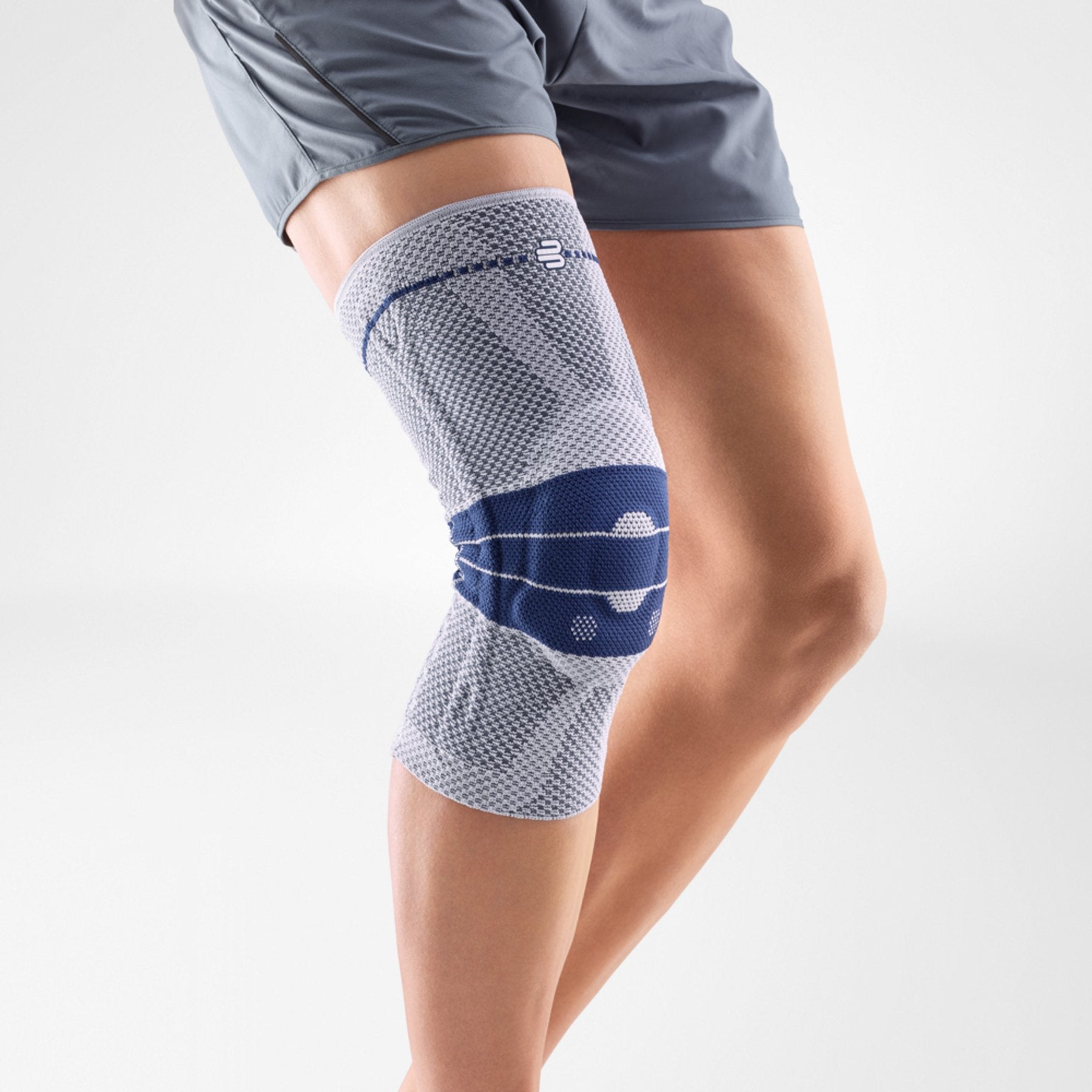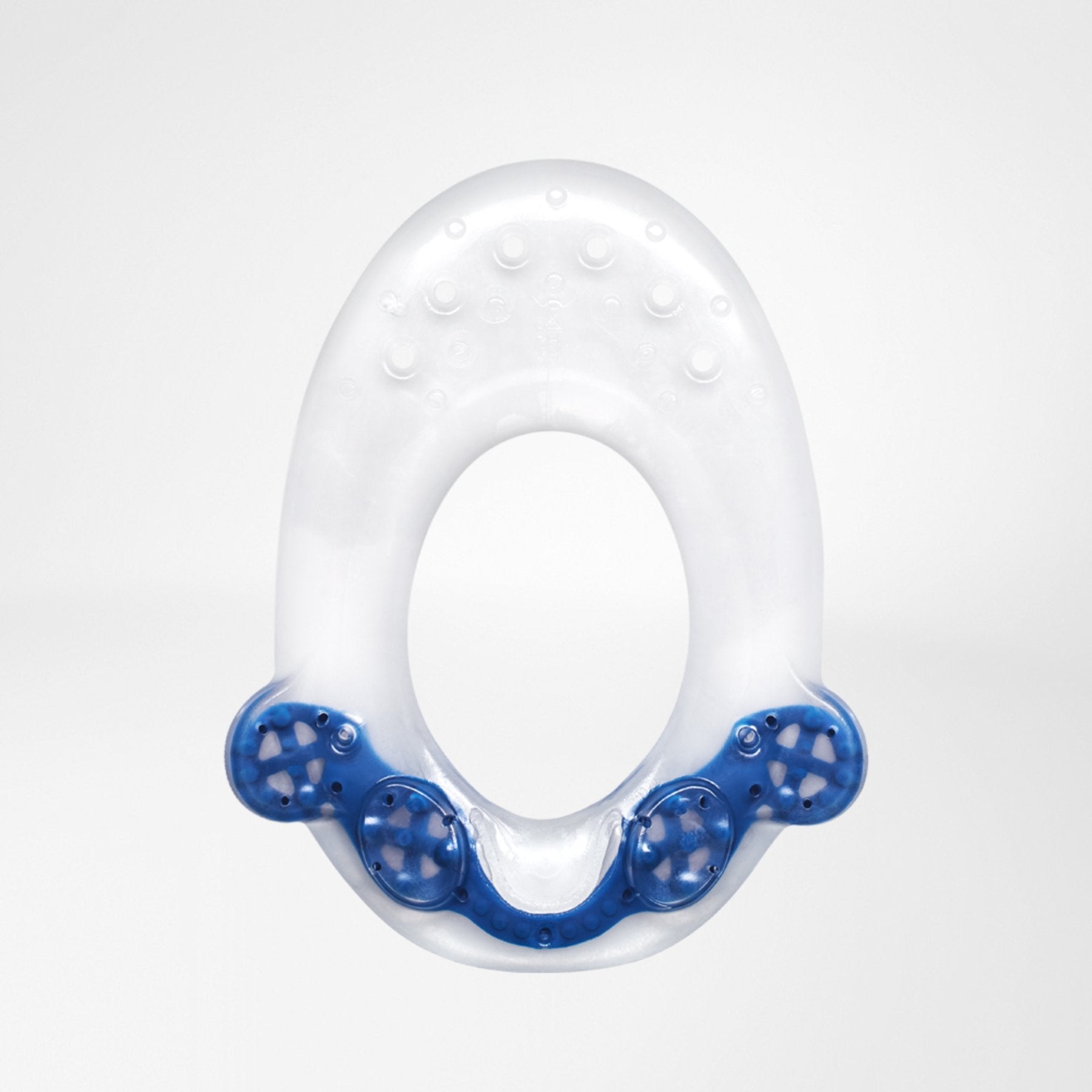You sit down at work all day and when your stand up, you notice your knees hurt. Occasional knee pain is a common symptom of everyday life, however, if knee pain becomes a consistent or reoccurring issue, it could be the onset of gonarthrosis. Learn more about the symptoms of osteoarthritis of the knee and how it is diagnosed. In addition, learn how to proceed after a diagnosis and how our braces and orthoses can help.
Osteoarthritis: what is it actually?
Osteoarthritis is the destruction of the protective layer of cartilage between the bones of the joints. In contrast to arthritis, arthrosis is not inflammation but the chronic wear and tear of a joint. If one speaks of gonarthrosis, this means arthrosis in the knee.

The knee is the most complex joint in our body. The cartilage layer of the knee protects the joint and absorbs shocks and harsh movements. It also ensures that the upper and lower leg bones do not rub directly against each other.
Over time, the protective cartilage wears out and begins to decay. This is why older people are more commonly affected by gonarthrosis. Under certain circumstances, however, excessive wear and tear can occur - even in younger individuals. There are various reasons for this: Overloading, for example through heavy physical work, competitive sports, or being overweight, can lead to wear and tear of the cartilage and influence the age at which arthrosis occurs.
Other causes of knee osteoarthritis can stem from misalignments in the joints, injuries, or broken bones. Although the disease is not genetic, in isolated cases the disposition to develop arthrosis can be inherited.
If the causes of knee arthrosis cannot be identified, it is referred to as primary arthrosis.
In secondary osteoarthrosis, wear and tear occur due to external factors.
Identify stages of gonarthrosis
Gonarthrosis develops insidiously. In some cases, it initially appears without any symptoms - even if the cartilage damage can already be seen. Stiff knees after sitting or long periods of rest can be the first sign of osteoarthritis in the knee. After a few steps or minutes, this start-up pain slowly subsides and the knee joint is fully mobile again. Cracking or crunching knees can also be an early indicator of the onset of arthrosis.

As the disease progresses, the pain steadily increases. It also occurs more frequently. Those affected feel the pain in their knees more intensely, especially during exertion or when bending the joint. In the long term, knees hurt even with slight movement, when at rest and while sleeping. If the cartilage is already damaged to such an extent that the bones rub directly against each other, extremely painful inflammation can develop in the joint. Signs of this are swollen knee joints and reddish-colored skin that is also warm or hot to the touch.
In the advanced stage of gonarthrosis, there are severe limitations in movement and increased pain. Due to these restrictions, many choose to stay sedentary, however, the lack of exercise means the cartilage has less blood supply, so there is increased damage due to the lack of nutrients.
Gonarthrosis can sometimes also be the reason for an inability to work or lead to early retirement.

Treating Knee OA
Medication, proper nutrition, exercise, medical braces, and orthoses can relieve pain and improve mobility.

Joint Friendly Activities
Learn safe training tips and discover ten activities that are gentle on your joints while keeping you active.
Knee Pain: when to see a doctor?
If knee pain occurs frequently and causes noticeable discomfort on a regular or reoccurring basis, a doctor should be consulted. A doctor will ask about the nature of the symptoms and when they appeared. In addition, previous knee injuries and underlying diseases are important information for the doctor. The doctor will examine the knee joint using various tests. They will assess the mobility and function of the knee joint. A reliable diagnosis is only possible if X-rays show advanced cartilage wear. A clear indication of this is a narrowed joint space. Cartilage injuries, for example after a sports accident, are less clearly recognizable, which is why performing an (MRI) may make sense here.

Diagnosis of gonarthrosis – and then?
Once the doctor has determined that the cartilage has already been damaged, it cannot be reversed. However, there are many treatment options to relieve the pain and slow down the progression of the disease. Bauerfeind knee braces and orthoses help to relieve, stabilize and mobilize the joint under stress. A good brace combined with physiotherapy and therapeutic training is ideal for strengthening the muscles thereby reducing the strain on the joint. If necessary, the doctor may prescribe anti-inflammatory and analgesic drugs.
Physical therapy, medical bracing, and an active and healthy lifestyle can delay the progression of the disease and prevent the need for more invasive treatments down the line!















